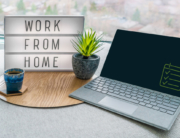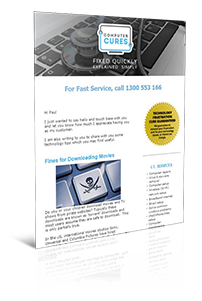Home / Handy Tips /

How do I make my Mac faster? It’s the age-old question, one that we are going to tackle head-on below.
A slow Mac is torture, but do not despair. There are solutions: tips, tricks, and expert moves you can pull to speed up your Mac computer and regain your sanity.
Slow performance can result from software and hardware issues, many of which are resolvable. Give the six tips below a try and watch your sluggish iMac or MacBook Pro transform into a high-powered internet-surfing, photo-editing, email-checking, game-playing machine.
How do I make my Mac faster?
You asked. Now, we deliver. Here’s how you can increase your Mac’s speed, boost performance, and enjoy uninterrupted computer use.
Tip 1: Restart your Mac
Restarting your Mac is akin to checking whether a broken toaster is plugged in – it seems obvious, but it’s often a step forgotten. Many Mac users go weeks, even months, without shutting down their machine. The habit is convenient but can limit speed and performance.
So, go ahead. Restart your Mac and give it the opportunity to refresh its memory (RAM) and switch off any lingering unused applications or processes.
Tip 2: Assess the number of web browser tabs you have opened
How do I make my Mac faster? Here’s an easy one: close those articles you’ve had open for the past two weeks and accept that you just might not read them.
An activity as seemingly innocent as browsing the web can cause your system to slow to a crawl – especially if you’ve got a whole bunch of tabs open. If possible, try to limit your number of tabs to ten. This rule of thumb should prevent your Mac’s resources from becoming drained.
Tip 3: Close unused apps
Your Mac’s RAM is finite, and the more applications you have open at any one time, the slower your machine will run. You may be able to upgrade the RAM in your Mac if you need to multi-task, but in the meantime, shut down any apps you’re not using, especially those that are using high volumes of memory. Here’s how to find this out:
Open Finder. Click Applications > Utilities > Activity Monitor. Open the Memory tab.
Here, you’ll see the applications currently running in the order of how much memory they’re using.
Tip 4: Upgrade to an SSD
A solid-state drive (SSD) delivers up to ten times faster read speeds and 20 times faster write speeds. If you’re still on the fence about upgrading, those numbers should push you over the edge.
The majority of older Mac systems – including iMacs, MacBooks, MacBook Airs, and MacBook Pros – feature outdated hard disk drives (HDD). These rely on small moving parts that literally spin like a CD-ROM to retrieve information.
SSDs, in contrast, are exactly what their name would suggest – solid. This means they are faster and more durable, energy-efficient, and reliable.
Tip 5: Uninstall apps you never use
If your Mac is running using an HDD rather than an SSD, one of the best ways to speed up your Mac is to uninstall apps you never use. This frees up valuable, performance-enhancing space.
Tip 6: Say goodbye to your beloved screensaver
You love your family photos, and seeing them on your desktop or screensaver brings you joy throughout your day. Unfortunately, if you’ve set your background to change every five, ten, or 15 minutes, you are wasting precious computing resources.
Say goodbye to your beloved screensaver in the name of high speed by opening System Preferences > Desktop & Screen Saver. Click the Desktop tab and uncheck the Change picture option.
To change your screensaver, navigate to the Screen Saver tab. Select the drop-down menu next to Start after, and select Never.
Upgrade your Mac with an SSD
Breathe new life into your Mac computer with a lightning-fast SSD upgrade and stop asking, ‘How do I make my Mac faster?’ Call the Computer Cures team today on 1300 553 166 or fill out the form on this page, and we’ll be in touch soon.









Leave A Comment